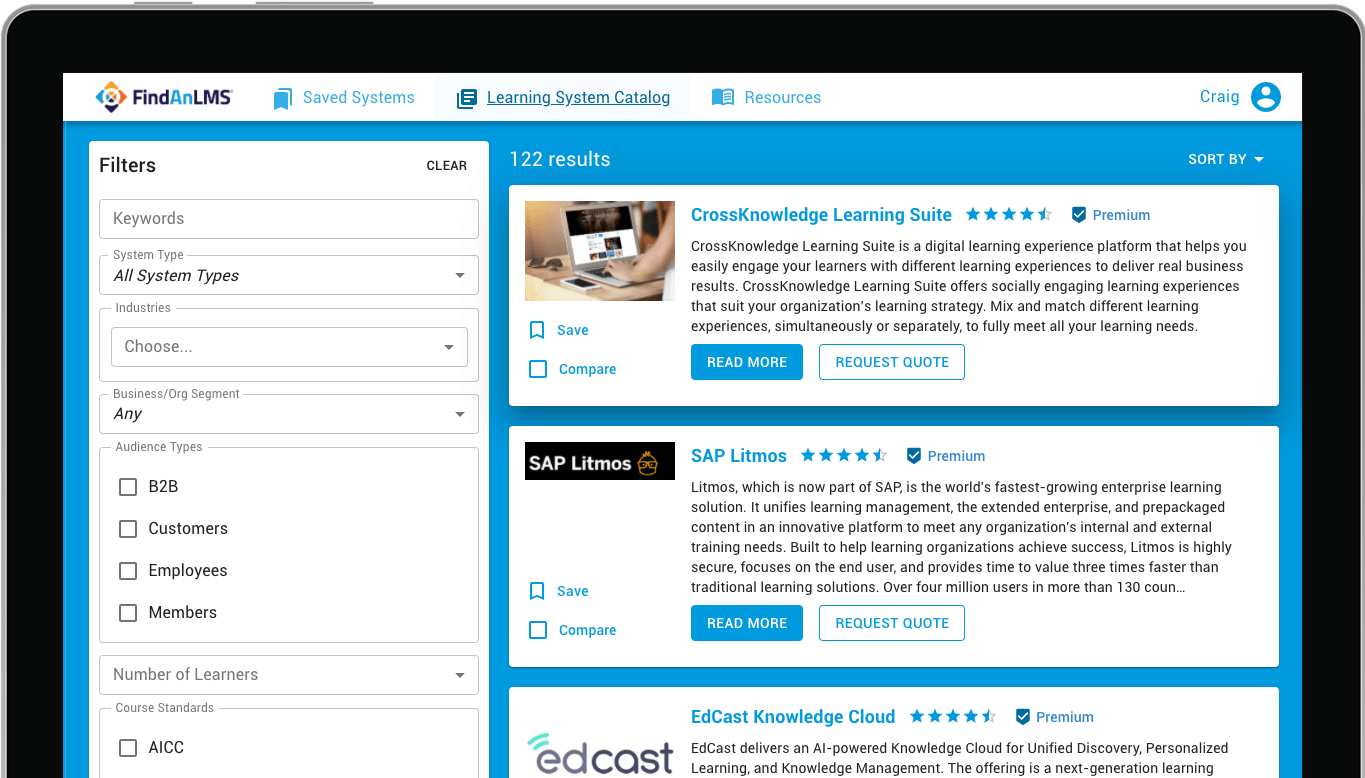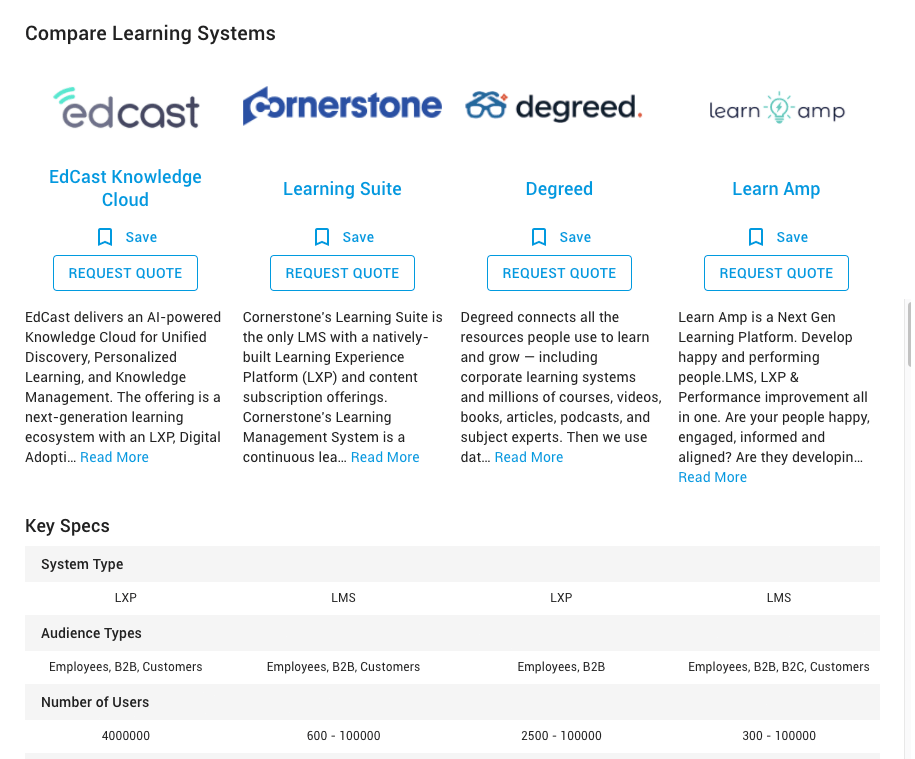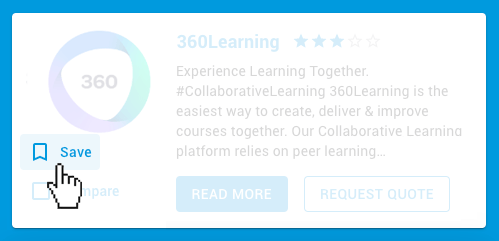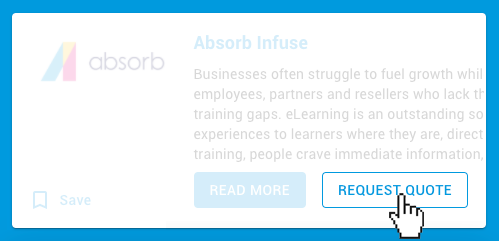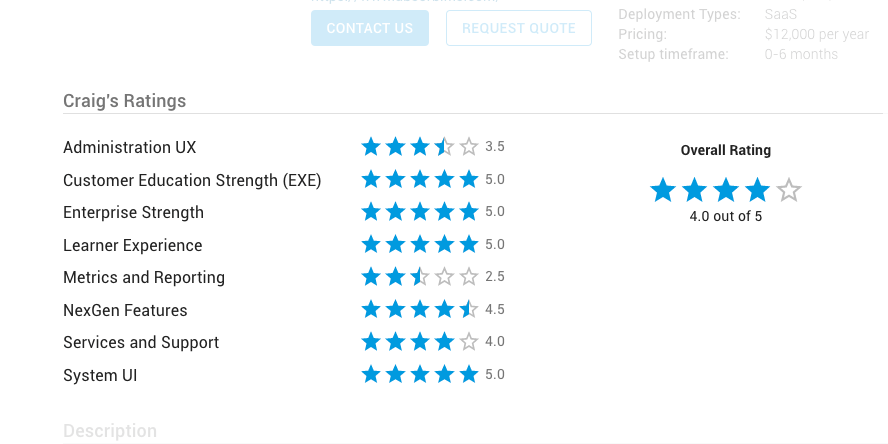Traditionally, learning took place in a classroom with an instructor teaching students about the alphabet, algebra, or healthcare compliance protocols. This model is still popular today, frequently going by the name ILT (Instructor-Led Training). Many learning management systems advertise themselves as an ILT LMS to show potential customers that they can facilitate remote ILT, commonly referred to as vILT (or Virtual Instructor-Led Training).
The harsh truth is that the traditional ILT model has multiple shortcomings and using an ILT LMS can help address some of them. Craig Weiss, a WBT (Web-Based Training) enthusiast who joined the e-learning industry at its inception in part due to his dissatisfaction with ILT as a teaching methodology, leverages his personal experience with thousands of learning systems to identify the features needed to optimize LMS ILT.
If you’re in the market for an LMS for instructor-led training, Weiss has created FindAnLMS.com as an all-encompassing resource to help average people find a great online learning platform. It includes more than 100 of the best systems plus exclusive insights and grades from the expert himself. You can create a free account on FindAnLMS.com to get started right now or keep reading to learn more about what to look for in an ILT LMS.
What does an LMS for Instructor-Led Training need?
Any ILT LMS needs “classroom management” features such as the ability to schedule a live seminar that learners can attend virtually. Weiss has noticed that some vendors started saying “facility management” but it means the same thing. Waitlist capabilities are good, and auto waitlist capabilities are better to save valuable admin time. The platform should also record meetings automatically, allowing learners to go back and revisit anything that didn’t sink in during the live training.
More importantly, an ILT LMS should do what it can to address the inherent shortcomings of instructor-led training. Adult learners get bored and distracted easily, especially if they have access to their devices. As such, a great ILT LMS needs to offer incentives such as gamification to pay attention to the instructor. Ideally, the points earned should be redeemable for something tangible as opposed to an email certificate or internet bragging rights.
Interactivity is also a must, but traditional group work typically entails one or two learners answering all of the questions while the rest watch. An ILT LMS should have features like virtual breakout rooms where the instructor can pop in and out of each group at will to ensure that everyone is participating, and even then it’ll work better with smaller class sizes.
Working adults are busy, so an ILT LMS needs to value learner time. The best way to do this is through vILT courses that learners can access whenever they wish instead of a set schedule, but Weiss recommends scheduling training for no longer than 45 minutes if live instruction is essential.
An ILT LMS can also incorporate e-learning materials into live classes to make them more effective. For example, a mobile app could offer just-in-time learning to help learners apply classroom material to their daily job tasks. Labs can also be a good way to use ILT time to gain firsthand experience in technical fields.
Find an ILT LMS on FindAnLMS.com
Choosing an LMS requires a lot of research and sorting through multiple variables, so the best thing to do is seek expert assistance. Craig Weiss’s e-learning industry predictions have proven over 90% accurate since 2009, and he gets advance notice of upcoming features and updates that the general public doesn’t have access to. Therefore, FindAnLMS.com always has up-to-date information on the top names in the LMS world. Create a free account on FindAnLMS.com right now to put Weiss’s expertise to work for your organization.

